South London mews property
23 April 2018
Overview
| Basement type: Retrofit |
Building type: Residential |
| Type of waterproofing: Type A, B & C |
Member: Delta Membrane Systems |
| Other: Constrained site |
|
The Project
Basement excavations have proved particularly popular for London mews houses, as these properties are often located in conservation areas and are frequently bound by strict planning rules and regulations. Adding a basement extension provides the opportunity to add[';;;;;;;;;;;;;;;;;[p extras living space such as additional family rooms, gyms, swimming pools, wine cellars, media rooms or functional spaces for storage and laundry.
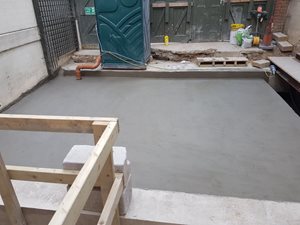
Adding a basement to a mews property does not alter the property’s external appearance. This project in particular is an interesting one, a mews property based in South West London, the property itself is sandwiched between two rear gardens of adjacent properties and didn’t offer the opportunity of extending the existing footprint. The property itself being long and thin, but offering a spacious drive to the front.
The scope of the project was to sympathetically renovate an existing basement, by excavating the front drive to give a spacious below ground space to facilitate a gym area.
By excavating under the drive it allowed the property’s owner to extend their home without compromising on neither the property’s external appearance or functionality.
Methodology
The project required the newly extended/excavated basement to be made watertight with a waterproofing system which provides a Grade 3 waterproof environment
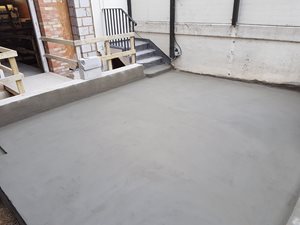
(in accordance with Table of 2 BS 8102:2009).
BS 8102:2009 sets out the limitations and scope for below ground structures, areas covered include:
- waterproofing barrier materials,
- waterproofing to construction joints,
- ensuring buildings are structurally integral with watertight construction,
- drained cavity construction,
- ground water assessment,
- ground water drainage; and
- associated risk assessments.
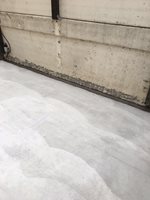
All basements should be constructed (or retrofitted) to cope with groundwater levels up to the full retained height of the basement. Waterproofing a basement preserves the integrity of a structure whilst ensuring the usefulness of the basement. The area of potential weakness (where moisture could penetrate into a structure) in a below ground structure is the wall/floor junction.
The structural waterproof concrete box was provided by the main contractor. Advance Property Preservation Limited were called upon to ensure the basement was structurally waterproofed to BS 8102:2009 requirements. Delta’s Waterproofing Design Specialist suggested incorporating Köster NB1 to wall/floor joints (where the masonry walls meet the concrete slab).
For external junctions, fillets were created using Köster Repair Mortar Plus (a unique expanding waterproof material) to keep important junctions protected and watertight. The coved fillets were further waterproofed using two coats of Köster NB1 crystallizing mineral waterproofing slurry. Insulation screed and further fillets were incorporated to create a robust waterproofing solution.
System Components
Our Technical Consultant recommended:
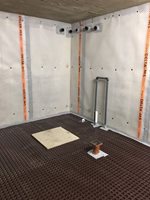
- Koster NB1
- Delta MS20
- Delta MS500
DELTA Membrane Systems Limited is qualified to use the CE mark (a mark of conformity to European standards) and hold BBA Agrément Certificate 00/3742. All membrane systems are manufactured in accordance with DIN EN ISO 9001, and EMAS EN ISO 14001.
Delta MS500 and MS20 - NBS Specification J40 (Clause 290) Flexible Sheet Tanking/Damp proofing. BS 8102:2009 Type C Drained Protection.
Summary
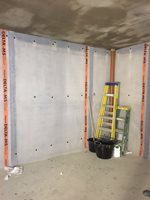
Advance Property Preservation Limited project managed the waterproofing of this property.
Detailing to the Type C Cavity Drainage System was refined, according to the high standard set by Delta Registered Installers.
Both the property owner and main contactor were delighted with Advance Property Preservation Limited. The project was completed on time and within budget.